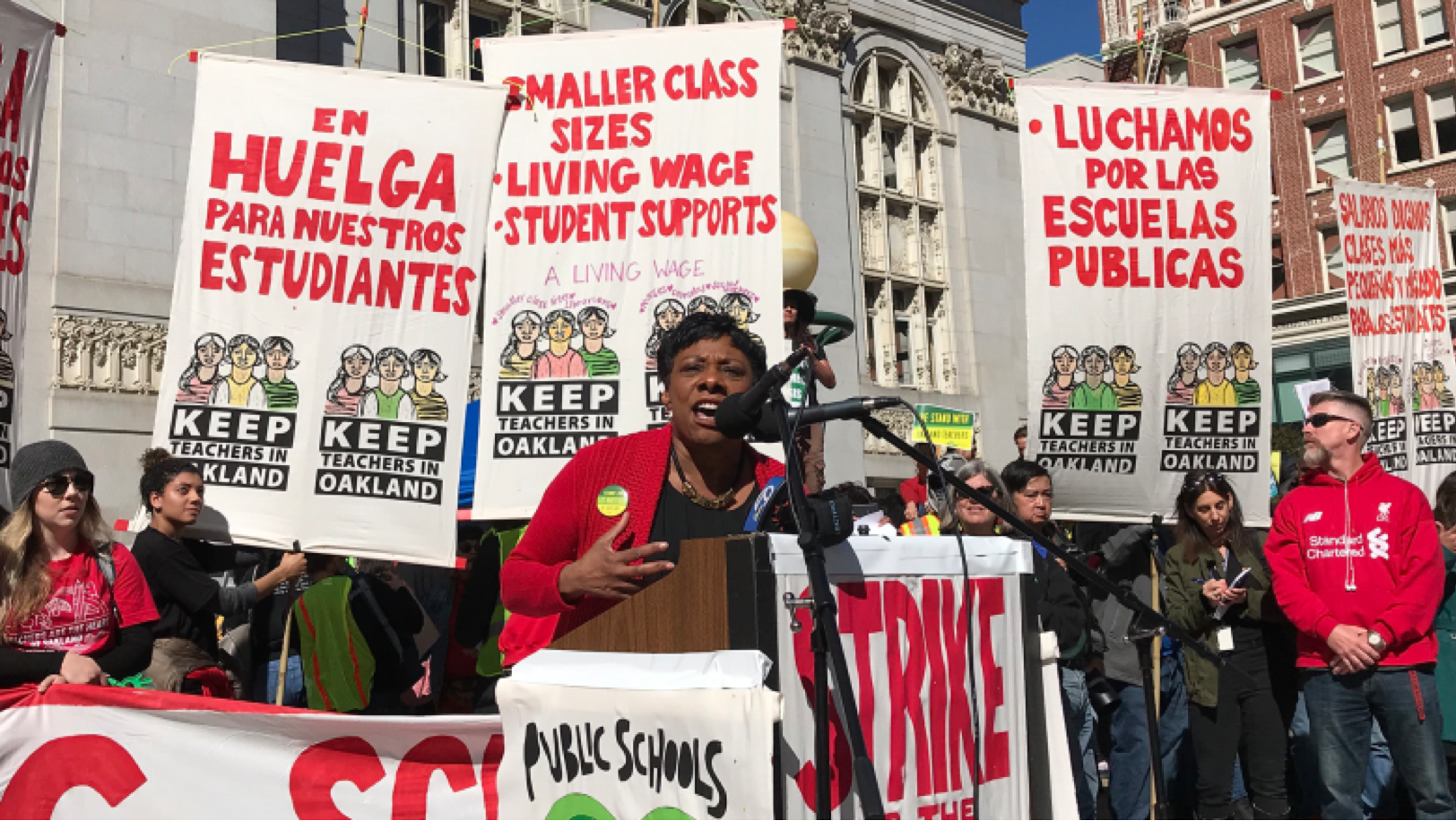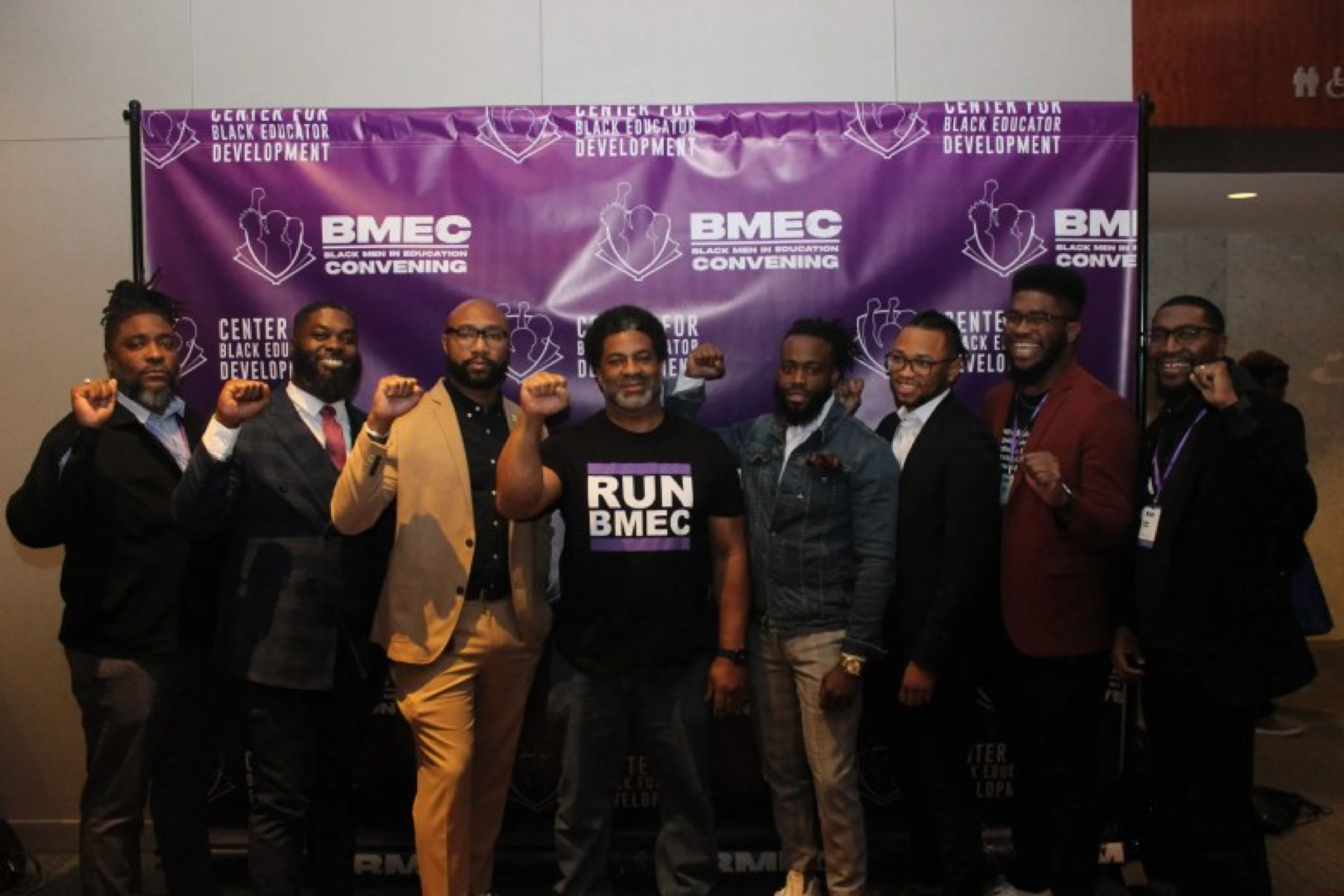#NNPA BlackPress
6 Leaders Pushing for Fair Education
SACRAMENTO OBSERVER — Majority-Black school districts continue to be underfunded and underrepresented in policy making. And Black students still continue to be over-policed; one Black student even went to court after his school expelled him for wearing locs they thought were too long.

By Aziah Siid | Word In Black | The Sacramento Observer
(WIB) – It’s been a tough year to be Black in education.
Red states like Florida, Texas and Idaho have passed strict new laws restricting how teachers can teach Black history. Conservative school districts kept important works of Black literature, like Toni Morrisson’s “The Bluest Eye,” off library shelves. White parents browbeat school officials to keep lessons about systemic racism out of the classroom because they said it would make white kids feel guilty.
Meanwhile, majority-Black school districts continue to be underfunded and underrepresented in policy making. And Black students still continue to be over-policed; one Black student even went to court after his school expelled him for wearing locs they thought were too long.
Still, there were champions who stood up and pushed back on behalf of Black students in 2024, trying to compel the country to fulfill its promise of a quality education for all. Here are six leaders in education pushing for equal education:
1. Denise Forte
A fierce advocate for disadvantaged students, Denise Forte is leading the fight for racial equity in schools, creating high-quality learning environments and pipelines for higher education. Her vision: every student has a shot at academic success in a supportive, welcoming learning environment.

Denise Forte, president and CEO at The Education Trust (photo courtesy of Ed Trust website)
The president and CEO of the nonprofit Education Trust, Forte, has a deep knowledge of education policy, honed during her time as a Capitol Hill staffer and serving in the Department of Education during the Obama administration.
Ed Trust, she says, “is mission-driven: we believe Black and Latino students, students from low-income backgrounds, students with disabilities, and English learners deserve a quality education, because it is their best opportunity to thrive.”
2. Dr. Tracie Anderson Swilley
Leading a school of around 660 students, all while mentoring assistant principals to ascend to principalship, Dr.Tracie Anderson Swilley, is a foot soldier in the movement for equitable education.
Under her leadership over the last 13 years, Fairfield Central High School in Winnsboro, South Carolina, has seen tremendous improvement in math, reading, and record graduation rates. Math proficiency for Black students skyrocketed from 46% to 74%, reading jumped from 60% to 76%, and the graduation rate reached a record 90.1%.
Despite teaching low-income students — the entire class of 2024 is eligible for free and reduced lunch — every member was accepted into an institution for higher education. But her fight for education equity isn’t over.
Swilley told Education Week she wants to see more women of color, like herself, in school leadership roles, and bring attention to the unique obstacles they face in education.
3. Randi Weingarten

WASHINGTON, DC – SEPTEMBER 18: The PFLAG National Flag Bearer Award recipient Randi Weingarten, President, American Federation of Teachers attends PFLAG National’s “Love Takes Justice” Event Photo by Paul Morigi/Getty Images for PFLAG National)
“The most dangerous person in the world is Randi Weingarten.”
That’s the opinion of Mike Pompeo, former secretary of state and C.I.A director during former President Donald Trump’s first term. He saw Weingarten, a diminutive, 65-year-old leader of the American Federation of Teachers, the influential national teachers union, as a threat because of her decades-long fight to bring fairness and equity to education.
A fierce advocate for diversity and inclusion in public education, Weingarten is a frequent target of conservative politicians, who accuse her of indoctrinating kids with, “dangerous academic constructs like critical race theory and radical gender theory are being forced on elementary school children.” as Florida Gov. Ron DeSantis put it.
That hasn’t deterred Weingarten, a former educator, attorney and NAACP board member, from standing up for her 1.7 million members and the children they teach. And she challenged the second Trump administration — and Linda McMahon, Trump’s nominee to lead the Education Department, to take similar care if and when she is confirmed.
“Will Linda McMahon support us as we teach students to read? Will she protect kids and families, so that everyone in a school feels welcome and can learn?”
4. Becky Pringle

Becky Pringle at an Oakland rally (photo courtesy of NEA website)
As leader of the nation’s largest teacher’s union, Becky Pringle wields considerable influence in national politics. But she defines herself as a mother and grandmother to public school children who cares about education. She takes that charge seriously, using her clout to improve the quality of teaching, boosting student achievement and creating safer, better learning environments.
When the pandemic shuttered the nation’s schools, for example, Pringle helped to focus the nation’s attention on how COVID-19 lockdowns laid bare racial and economic inequities in education that have existed for generations — inequities that Pringle herself encountered as a student. Her fight, she says, is to eliminate those problems for the next generation.
5. Sharif El-Mekki

Sharif El-Mekki, center, led the annual Black Men Educators Convening in Philadelphia (Photo by Anaz X)
Studies have proven that Black children are more likely to succeed when the teacher at the head of the class looks like them. Yet some 80 percent of the teacher workforce is white and female.
Therefore, the mission of Sharif El Mekki, president and CEO of the Center for Black Educator Development, is simple: reverse that trend and put more Black teachers at the chalkboard.
A forceful personality, El-Mekki is a former teacher and administrator in west Philadelphia, one of the city’s toughest areas. As leader of a nonprofit, however, his goal is to rebuild the national Black Teacher Pipeline..But he wears more than one hat.
Besides his scholarly work training up Black teachers, El-Mekki has launched efforts like The Fellowship—Black Male Educators for Social Justice, monitors the pulse of the ‘hood through Philly’s 7th Ward blog, and hosts the 8 Black Hands podcast.
6. Stacy Davis Gates
Another former educator, Stacy Davis Gates, president of the Chicago Teachers Union, also serves in several leadership roles in teachers’ unions. She’s executive vice president of the Illinois Federation of Teachers, vice president of the American Federation of Teachers, and chair of United Working Families, a progressive political organization.
Davis Gates is currently on leave from the classroom, where she taught high school social studies for over a decade at Englewood, Clemente and Mason Community Links High Schools.
The CTU represents nearly 30,000 teachers, paraprofessional and school-related personnel, and school clinicians working in the Chicago Public Schools and, by extension, the students and families they serve.
#NNPA BlackPress
LIHEAP Funds Released After Weeks of Delay as States and the District Rush to Protect Households from the Cold
BLACKPRESSUSA NEWSWIRE — The federal government has released $3.6 billion in home heating assistance after a delay that left states preparing for the start of winter without the program’s annual funding.

By Stacy M. Brown
Black Press USA Senior National Correspondent
The federal government has released $3.6 billion in home heating assistance after a delay that left states preparing for the start of winter without the program’s annual funding. The Low-Income Home Energy Assistance Program, known as LIHEAP, helps eligible households pay heating and cooling bills. The release follows a shutdown that stretched 43 days and pushed agencies across the country to warn families of possible disruptions.
State officials in Minnesota, Kansas, New York, and Pennsylvania had already issued alerts that the delay could slow the processing of applications or force families to wait until December for help. In Pennsylvania, more than 300,000 households depend on the program each year. Minnesota officials noted that older adults, young children, and people with disabilities face the highest risk as temperatures fall.
The delay also raised concerns among advocates who track household debt tied to rising utility costs. National Energy Assistance Directors Association Executive Director Mark Wolfe said the funds were “essential and long overdue” and added that high arrearages and increased energy prices have strained families seeking help.
Some states faced additional pressure when other services were affected by the shutdown. According to data reviewed by national energy advocates, roughly 68 percent of LIHEAP households also receive nutrition assistance, and the freeze in multiple programs increased the financial burden on low-income residents. Wolfe said families were placed in “an even more precarious situation than usual” as the shutdown stretched into November.
In Maryland, lawmakers urged the Trump administration to release funds after the state recorded its first cold-related death of the season. The Maryland Department of Health reported that a man in his 30s was found outdoors in Frederick County when temperatures dropped. Last winter, the state documented 75 cold-related deaths, the highest number in five years. Rep Kweisi Mfume joined more than 100 House members calling for immediate federal action and said LIHEAP “is not a luxury” for the 100,000 Maryland households that rely on it. He added that seniors and veterans would be placed at risk if the program remained stalled.
Maryland Gov. Wes Moore used $10.1 million in state funds to keep benefits moving, but noted that states cannot routinely replace federal dollars. His administration said families that rely on medical equipment requiring electricity are particularly vulnerable.
The District of Columbia has already mapped out its FY26 LIHEAP structure in documents filed with the federal government. The District’s plan shows that heating assistance, cooling assistance, weatherization, and year-round crisis assistance operate from October 1 through September 30. The District allocates 50 percent of its LIHEAP funds to heating assistance, 10 percent to cooling, 13 percent to year-round crisis assistance, 15 percent to weatherization, and 10 percent to administrative costs. Two percent is used for services that help residents reduce energy needs, including education on reading utility bills and identifying energy waste.
The District’s plan lists a minimum LIHEAP benefit of $200 and a maximum of $1,800 for both heating and cooling assistance. Crisis benefits are provided separately and may reach up to $500 when needed to resolve an emergency. The plan states that a household is considered in crisis if it has been disconnected from energy service, if heating oil is at 5 percent or less of capacity, or if the household has at least $200 owed after the regular benefit is applied.
The District’s filing notes that LIHEAP staff conduct outreach through community meetings, senior housing sites, Advisory Neighborhood Commissions, social media, posters, and mass mailings. The plan confirms that LIHEAP applicants can apply in person, by mail, by email, or through a mobile-friendly online application and that physically disabled residents may request in-home visits.
As agencies nationwide begin distributing the newly released funds, states continue working through large volumes of applications. Wolfe said LIHEAP administrators “have been notified that the award letters have gone out and the states can begin to draw down the funds.”
#NNPA BlackPress
Seven Steps to Help Your Child Build Meaningful Connections
BLACKPRESSUSA NEWSWIRE — Swinging side by side with a friend on the playground. Sharing chalk over bright, colorful sidewalk drawings. Hiding behind a tree during a spirited game of hide-and-seek. These simple moments between children may seem small, but they matter more than we think

By Niyoka McCoy, Ed.D., Chief Learning Officer, Stride/K12
Swinging side by side with a friend on the playground. Sharing chalk over bright, colorful sidewalk drawings. Hiding behind a tree during a spirited game of hide-and-seek. These simple moments between children may seem small, but they matter more than we think: They lay the foundation for some of life’s most important skills.
Through everyday play, young children begin learning essential social and emotional skills like sharing, resolving conflicts, showing empathy, and managing their emotions. These social skills help shape emotional growth and set kids up for long-term success. Socialization in early childhood isn’t just a “nice-to-have”—it’s essential for development.
Yet today, many young children who haven’t yet started school aren’t getting enough consistent, meaningful interaction with peers. Research shows that there’s a decline in active free play and peer socialization when compared to previous generations.
There are many reasons for this. Children who are home with a parent during the day may spend most of their time with adults, limiting opportunities for peer play. Those in daycare or preschool may have restricted free play, and large classrooms can reduce supervision and social coaching. Some children live in rural areas, are homebound due to illness, have full schedules, or rely on screens to fill their playtime. And for some families, finding other families with young children to connect with isn’t easy.
While these challenges can feel significant, opportunities for connection still exist in every community. Families can take simple steps to help children build friendships, create a sense of belonging, and strengthen social skills. Here are some ideas to get started:
- Storytime sessions at libraries or local bookstores
- Community offerings such as parent-child workshops, art, music, gymnastics, swimming, or sports programs
- Weekly events at children’s museums, which may include art projects, music workshops, or science experiments
- Outdoor exploration, where kids can play with peers
- Local parenting groups that organize playdates and group activities
- Volunteer opportunities where children can participate, such as pet adoption events or packing meals at a food bank
- Classes for kids at local businesses, including hardware, grocery, or craft stores
Some of these community activities are free or low-cost and give kids the chance to build friendships and practice social skills. Parents can also model positive social behavior by interacting with other parents and encouraging their children to play with their peers.
These may seem like small moments of connection, but they can have a powerful impact. Every time your child shares a toy, plays make-believe with peers, or races a friend down the slide, they’re not just playing—they’re learning the skills that build confidence, empathy, and lasting friendships. And it’s good for you, too. Creating intentional opportunities for play also helps you strengthen your own network of parents who can support one another as your children grow together.
#NNPA BlackPress
Seven Steps to Help Your Child Build Meaningful Connections
BLACKPRESSUSA NEWSWIRE — Swinging side by side with a friend on the playground. Sharing chalk over bright, colorful sidewalk drawings. Hiding behind a tree during a spirited game of hide-and-seek. These simple moments between children may seem small, but they matter more than we think

By Niyoka McCoy, Ed.D., Chief Learning Officer, Stride/K12
Swinging side by side with a friend on the playground. Sharing chalk over bright, colorful sidewalk drawings. Hiding behind a tree during a spirited game of hide-and-seek. These simple moments between children may seem small, but they matter more than we think: They lay the foundation for some of life’s most important skills.
Through everyday play, young children begin learning essential social and emotional skills like sharing, resolving conflicts, showing empathy, and managing their emotions. These social skills help shape emotional growth and set kids up for long-term success. Socialization in early childhood isn’t just a “nice-to-have”—it’s essential for development.
Yet today, many young children who haven’t yet started school aren’t getting enough consistent, meaningful interaction with peers. Research shows that there’s a decline in active free play and peer socialization when compared to previous generations.
There are many reasons for this. Children who are home with a parent during the day may spend most of their time with adults, limiting opportunities for peer play. Those in daycare or preschool may have restricted free play, and large classrooms can reduce supervision and social coaching. Some children live in rural areas, are homebound due to illness, have full schedules, or rely on screens to fill their playtime. And for some families, finding other families with young children to connect with isn’t easy.
While these challenges can feel significant, opportunities for connection still exist in every community. Families can take simple steps to help children build friendships, create a sense of belonging, and strengthen social skills. Here are some ideas to get started:
- Storytime sessions at libraries or local bookstores
- Community offerings such as parent-child workshops, art, music, gymnastics, swimming, or sports programs
- Weekly events at children’s museums, which may include art projects, music workshops, or science experiments
- Outdoor exploration, where kids can play with peers
- Local parenting groups that organize playdates and group activities
- Volunteer opportunities where children can participate, such as pet adoption events or packing meals at a food bank
- Classes for kids at local businesses, including hardware, grocery, or craft stores
Some of these community activities are free or low-cost and give kids the chance to build friendships and practice social skills. Parents can also model positive social behavior by interacting with other parents and encouraging their children to play with their peers.
These may seem like small moments of connection, but they can have a powerful impact. Every time your child shares a toy, plays make-believe with peers, or races a friend down the slide, they’re not just playing—they’re learning the skills that build confidence, empathy, and lasting friendships. And it’s good for you, too. Creating intentional opportunities for play also helps you strengthen your own network of parents who can support one another as your children grow together.
-

 Activism3 weeks ago
Activism3 weeks agoOakland Post: Week of November 12 – 18, 2025
-

 Activism4 weeks ago
Activism4 weeks agoOakland Post: Week of November 5 – 11, 2025
-

 Activism2 weeks ago
Activism2 weeks agoIN MEMORIAM: William ‘Bill’ Patterson, 94
-

 Activism3 weeks ago
Activism3 weeks agoHow Charles R. Drew University Navigated More Than $20 Million in Fed Cuts – Still Prioritizing Students and Community Health
-

 #NNPA BlackPress3 weeks ago
#NNPA BlackPress3 weeks agoThe Perfumed Hand of Hypocrisy: Trump Hosted Former Terror Suspect While America Condemns a Muslim Mayor
-

 Bay Area3 weeks ago
Bay Area3 weeks agoNo Justice in the Justice System
-

 #NNPA BlackPress3 weeks ago
#NNPA BlackPress3 weeks agoProtecting Pedophiles: The GOP’s Warped Crusade Against Its Own Lies
-

 #NNPA BlackPress2 weeks ago
#NNPA BlackPress2 weeks agoTrump’s Death Threat Rhetoric Sends Nation into Crisis




















































